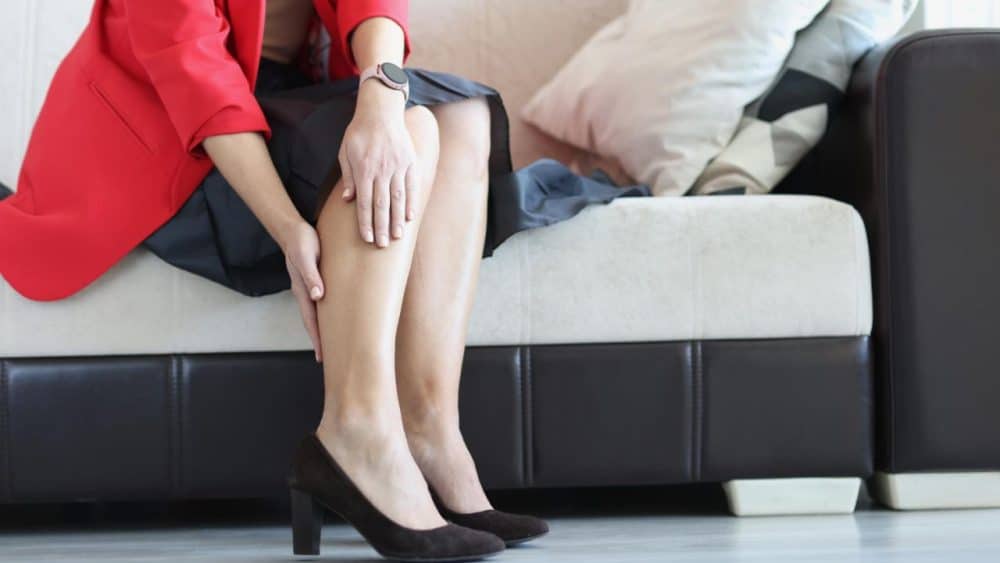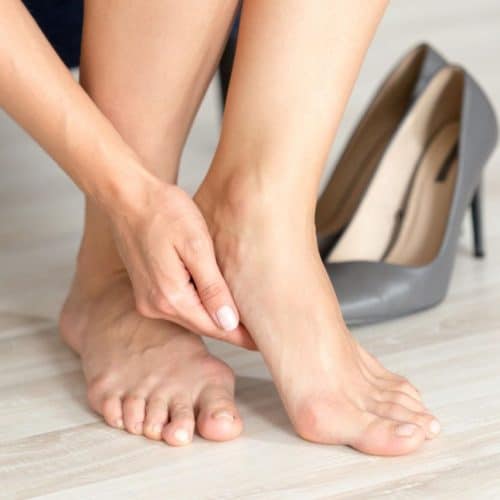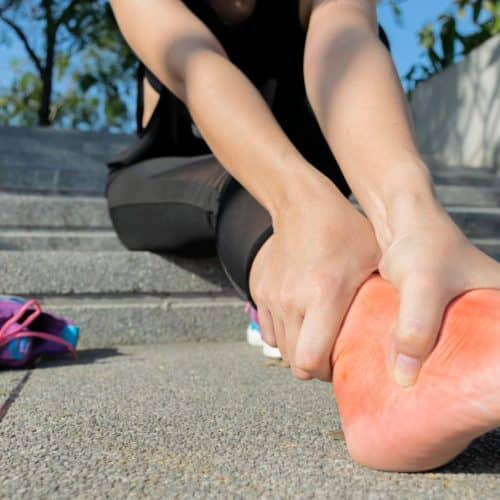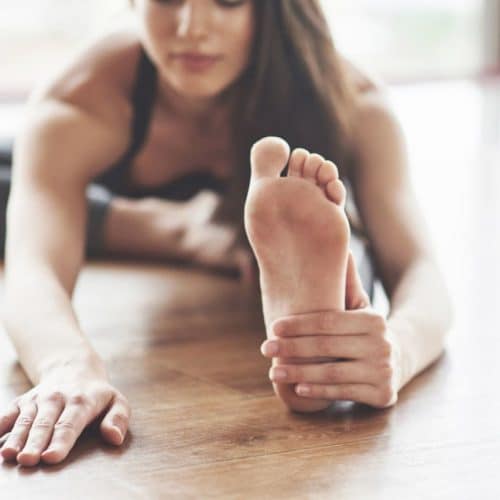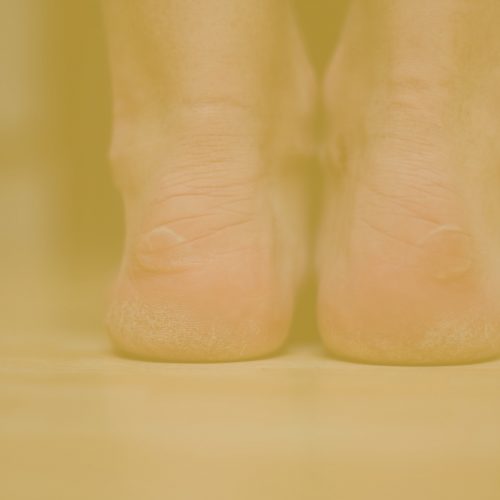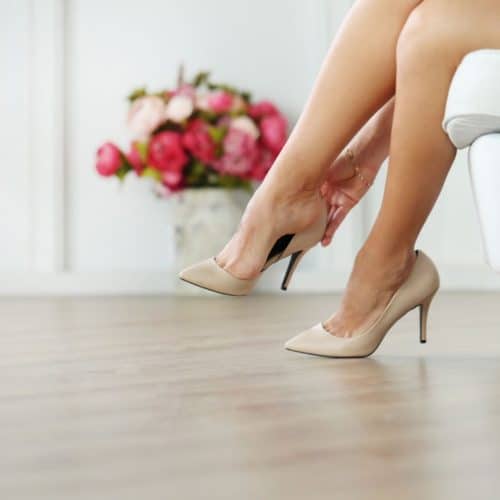For a very long time, women who dress elegantly, sophisticatedly, and stylishly wore shoes with very high heels. These shoes have become a mainstay in the wardrobes of many ladies, and they are worn everywhere, from the office to red carpet events.
However, the beauty of high heels comes with a possible downside in the form of heel discomfort. This article delves into the factors contributing to this discomfort and provides some potential remedies for readers who just can’t say no to the allure of stilettos.
What Is Heel Pain?
Heel pain is a common foot complaint experienced by many, often manifesting as discomfort or soreness in the heel area. This pain can range from mild to severe, either chronic or acute. Understanding its causes, symptoms, and treatments is crucial for effective management and prevention.
1. Causes of Heel Pain
Heel pain can arise from various factors, including:
- Plantar Fasciitis: One of the most common causes, this condition results from inflammation of the plantar fascia, a thick band of tissue that runs across the bottom of the foot, connecting the heel bone to the toes.
- Achilles Tendinitis: This is an overuse injury of the Achilles tendon, the band of tissue that connects calf muscles at the back of the lower leg to the heel bone.
- Heel Bursitis: Inflammation of the bursa at the back of the heel, often caused by landing awkwardly or hard on the heels.
- Heel Spurs: These are calcium deposits that form a bony protrusion on the underside of the heel bone, often linked to plantar fasciitis.
- Stress Fractures: These are tiny breaks in the heel bone, often caused by repetitive stress, like jumping or running, especially in athletes.
2. Symptoms of Heel Pain
While the primary symptom is pain in the heel, the nature and location of the pain can vary based on the cause. Some common symptoms include:
- Sharp, stabbing pain, especially upon waking up in the morning.
- A dull ache or pain that intensifies after prolonged standing or walking.
- Pain that worsens when climbing stairs or after intense activity.
- Swelling or discolouration around the heel.
3. Treatment and Prevention
The treatment for heel pain largely depends on its cause. Some general treatments include:
- Rest and avoid activities that exacerbate the pain.
- Applying ice to reduce swelling.
- Over-the-counter pain relievers.
- Physical therapy or exercises to strengthen foot muscles.
- Orthotic devices or shoe inserts for added support.
In extreme situations, it is possible that more intrusive treatments, such as injections or surgery, will be necessary. The use of shoes with good arch support, keeping a healthy weight, getting sufficiently warmed up before engaging in physical activity, and frequently stretching the muscles in the feet and calves are all effective preventative measures.
Why Do High Heels Cause Heel Pain?
High heels, while undeniably stylish, can have a significant impact on the anatomy and biomechanics of the foot. Here’s a deeper dive into the reasons behind the discomfort they can cause:
- Redistribution of Weight: When wearing high heels, the foot’s natural weight distribution is altered. Typically, our weight is evenly distributed between the heel and the foot ball. However, high heels shift this balance, placing excessive pressure on the forefoot. This leads to pain in the ball of the foot and can cause the heel to experience discomfort due to the altered stance.
- Stress on the Plantar Fascial Muscle Band: The plantar fascia is a thick tissue band connecting the heel bone to the toes. When wearing high heels, this band is stretched more than usual, causing it to become inflamed or even develop micro-tears. This inflammation or tearing is often the primary cause of heel pain in high-heel wearers.
- Altered Posture and Gait: High heels cause a forward tilt in the pelvis, leading to an exaggerated spine curvature. This affects the foot and can lead to back, neck, and shoulder pain. Additionally, the gait or walking pattern is altered, with wearers often taking shorter steps and putting more weight on the inside of the foot, leading to potential misalignment issues.
- Shortening of the Achilles Tendon: Over time, frequent wearing of high heels can cause the Achilles tendon, which connects the calf muscle to the heel bone, to shorten. This shortening can create tension in the tendon, leading to pain in the heel and increasing the risk of injuries like tendonitis.
- Toe Compression: High heels, especially those with pointed toes, can compress the toes into an unnatural position. This can lead to issues like bunions, hammertoes, and nerve pain.
- Decreased Shock Absorption: The natural padding on the bottom of the foot can become compressed and thin over time due to the increased pressure from high heels. This means the foot has less natural cushioning, making it more susceptible to impact-related injuries and pain.
- Increased Risk of Ankle Sprains: The elevated foot position in high heels can lead to instability, increasing the risk of ankle sprains or fractures, especially if one were to trip or misstep.
Understanding the intricate details of how high heels affect foot health is crucial for wearers to make informed decisions and take preventive measures. Whether choosing the right heel type, limiting wearing time, or seeking professional advice, being informed is the first step to ensuring foot well-being.
Navigating the Balance
While the allure of high heels is undeniable, it’s essential to balance style and health. Here are some comprehensive strategies to help you enjoy the elegance of heels without compromising your foot’s well-being:
- Limit the Heel Height: Not all high heels are created equal. Opting for a lower heel, preferably 2 inches or less, can significantly reduce the strain on your feet. A moderate heel height provides a more natural foot position, ensuring comfort and reducing the risk of injury.
- Choose Wedges Over Stilettos: Wedges offer a broader base, distributing weight more evenly across the foot than traditional stilettos. This design can reduce pressure points and offer better stability, making them a more comfortable choice for extended wear.
- Prioritise Arch Support: Consider shoes with built-in arch support or invest in orthotic inserts. These can provide additional support to the plantar fascial muscle band, reducing strain and helping to prevent heel pain.
- Limit Wearing Time: It’s essential to give your feet a break. If you’re planning to wear high heels for an event, consider wearing comfortable shoes before and after. For those who wear heels daily, try to alternate with flats or supportive sneakers to reduce continuous strain on the feet.
- Stretch and Strengthen: Regular foot exercises can help counteract the effects of high heels. Stretching the Achilles tendon and strengthening the ankle muscles can improve stability and reduce the risk of injuries. Simple exercises, like calf raises or rolling a tennis ball under the foot, can make a significant difference.
- Invest in Quality: Not all high heels are made the same. Investing in quality shoes made of breathable materials with cushioned insoles can enhance comfort. A well-constructed shoe will also provide better support and alignment for the foot.
- Listen to Your Feet: Pain is a signal from your body that something is amiss. If you experience discomfort while wearing heels, listening to your body is essential. Take breaks, stretch, or switch to a more comfortable pair of shoes.
- Seek Professional Guidance: Regular check-ups with a podiatrist can help address any concerns related to foot health. They can offer personalised advice, recommend specific shoe brands or styles, and provide treatments if necessary.
Striking the right balance between fashion and health requires awareness, proactive measures, and sometimes a bit of compromise. By understanding the potential risks of high heels and taking steps to mitigate them, you can enjoy the best of both worlds.
Conclusion
There is no denying the chic appeal of high heels, but it is imperative that anybody who wears them be aware of the hazards that may be involved. If you are able to get an awareness of the factors that contribute to heel discomfort and implement preventative measures, you will be able to enjoy the sophistication of heels without jeopardising the health of your feet.
Visit Well Heeled Podiatry if you want to get more information about foot health or if you want to seek the advice of a specialist.


